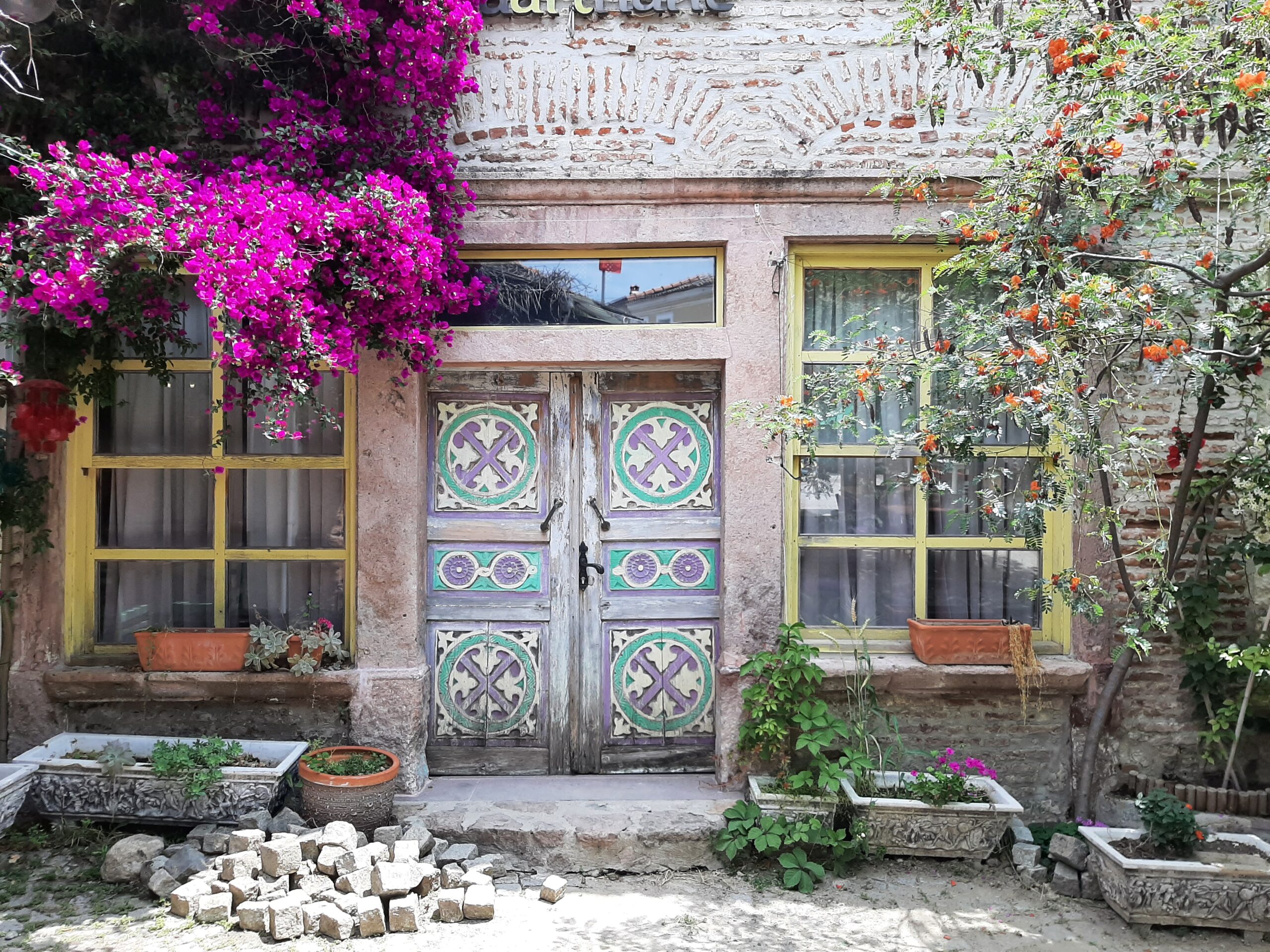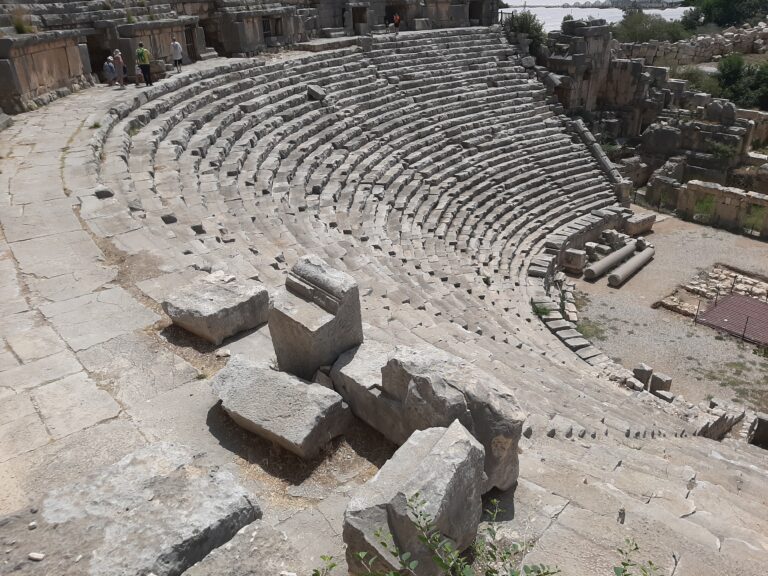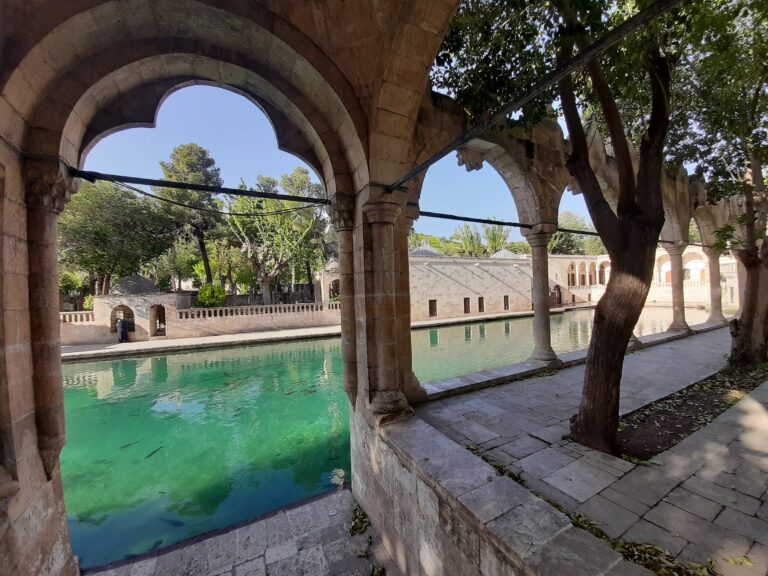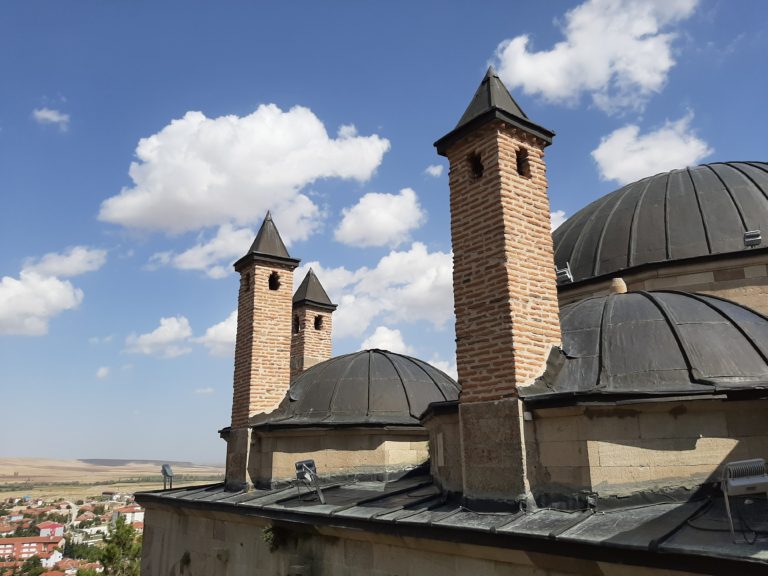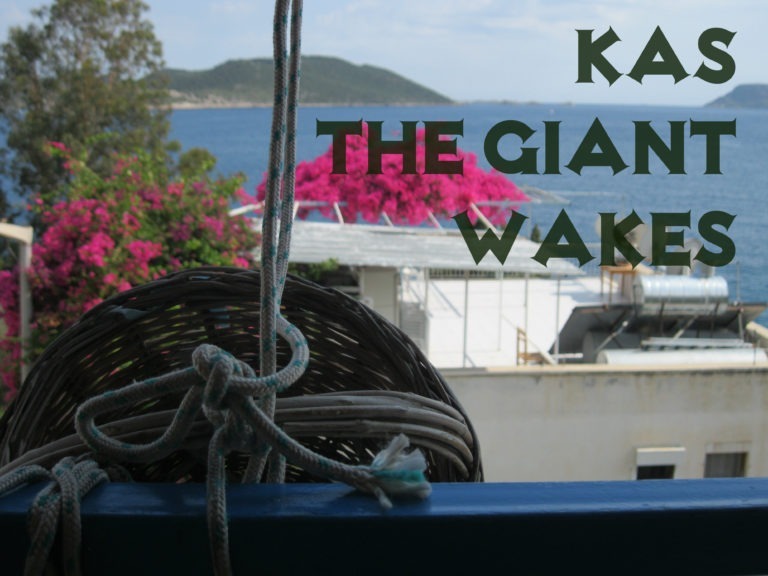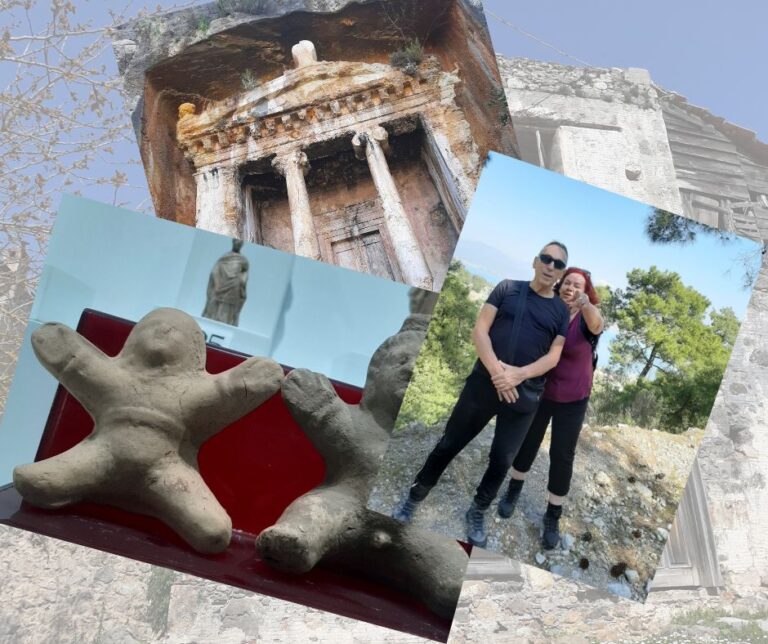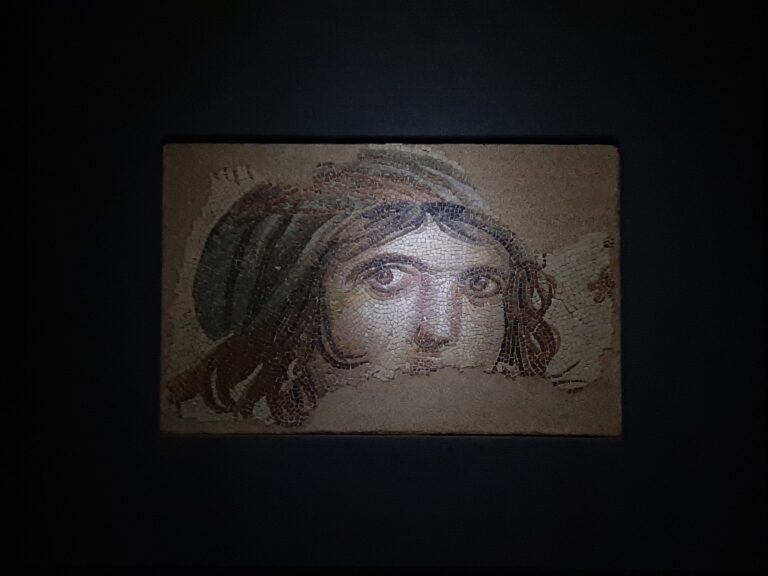Visit Ayvalik – Cunda Island, Kucukkoy and Seytan Sofrasi
Depending on the time of year you go, there are a number of easy daytrips and outings you can make from Ayvalik. Here’s what you need to know if you want to visit Cunda Island, Küçükköy and Seytan Sofrasi.
CUNDA ISLAND (ALI BEY ADASI)
When most people think of Ayvalik, they think of a fun Aegean seaside town full of happy holiday makers. However Ayvalik’s history is quite turbulent. Until Fatih Sultan Mehmet II, aka Mehmet the Conqueror well, you know, conquered the island of Midilli (Lesbos) the region was often under attack from pirate raids, forcing locals to move inland.
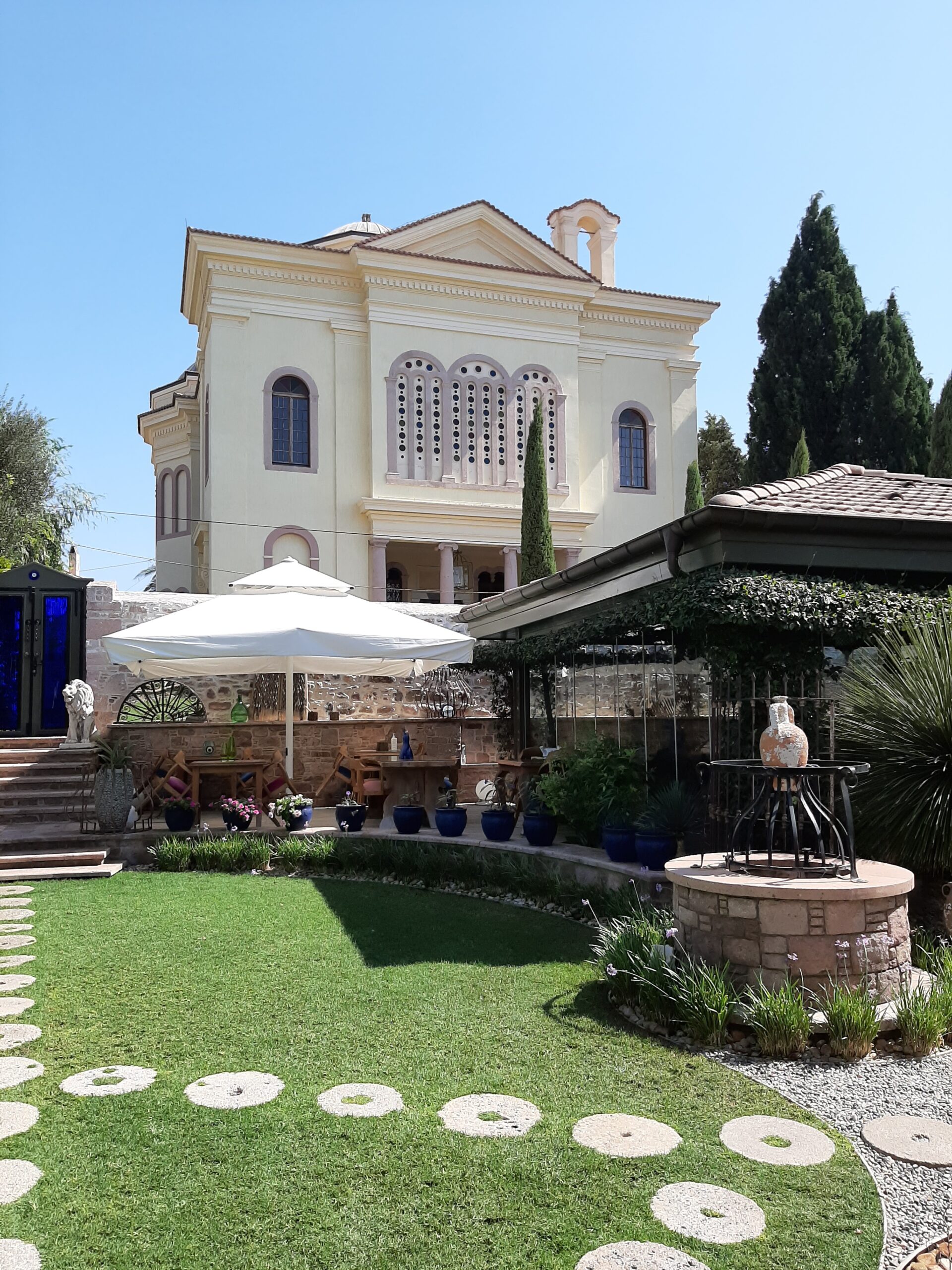
After FSM took control of the sea routes, people began to settle on Mosconissi Island, meaning the perfumed island in reference to the wildflowers that covered the terrain. The Ottomans registered it as Yunda and during the 18th and 19th centuries it was a rich settlement independent of Ayvalik, with migrants from Crete and Lesbos aiding in the preservation of Cunda’s, as it became known, culture.
Today Cunda Island or Ali Bey Adasi as it’s called in Turkish after Ali Çetinkaya, the first man to fire a bullet in the Turkish War of Independence, is a lovely place to get away from the chaos of Istanbul and very popular with city residents wanting to escape the summer heat. Consequently it can get pretty busy in the high season but there are things to see and do year round. Whether you have a fascination for history or prefer to spend time relaxing outdoors or hiking you’ll find something to enjoy.
Things to see on Cunda Island
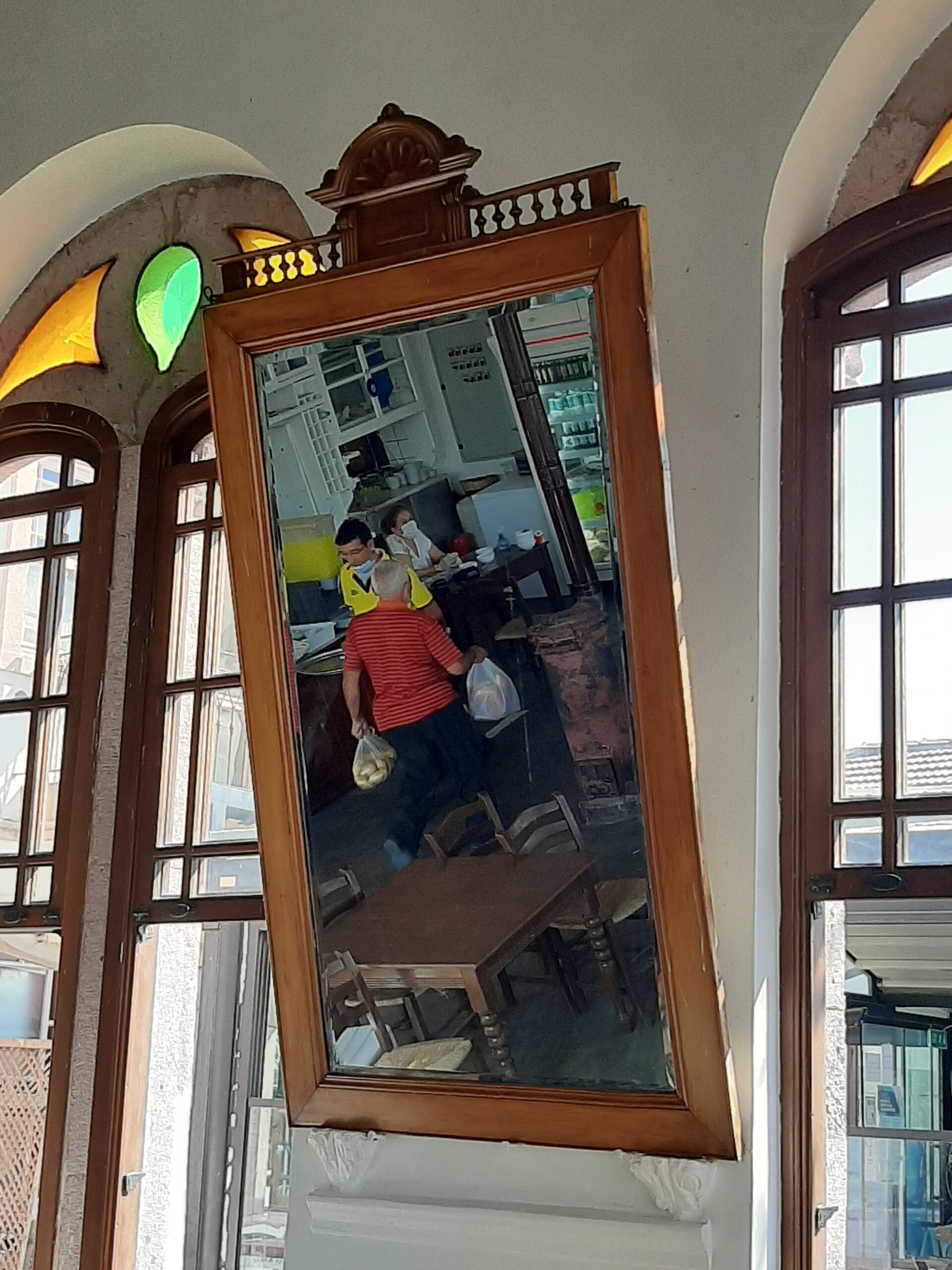
There are a number of fish restaurants* along the main bay of Cunda Island, but the most famous establishment is Taş Kahvesi in a stylish stone building. This Turkish coffeehouse naturally serves coffee, but do try the koruk suyu, fresh grape juice, on a hot day. Suitably refreshed head inland into the small streets that make up the town centre. The buildings have been converted to a mix of shops selling souvenirs, jewellery and clothes, interspersed with boutique hotels and upmarket cafes.
To get a sense of the former wealth of Cunda Island take note of the masonry work around the windows and doors of the stone buildings you pass. They would have required hours of expertise by highly trained stonemasons to complete, which doesn’t come cheap. Even if you don’t plan to stay there, have a look at the House of the Despot with large windows placed just so to catch the view and an interior fit for royalty.
The Ayvalik Rahmi M. Koç Museum Museum of Transport and Technology in town is housed in the former Taksiyarhis Church. The architectural interior features of the church have been retained and restored to form a back drop for the collection of all things transport, including tin toys, steamboats and trains, and early model motorbikes.
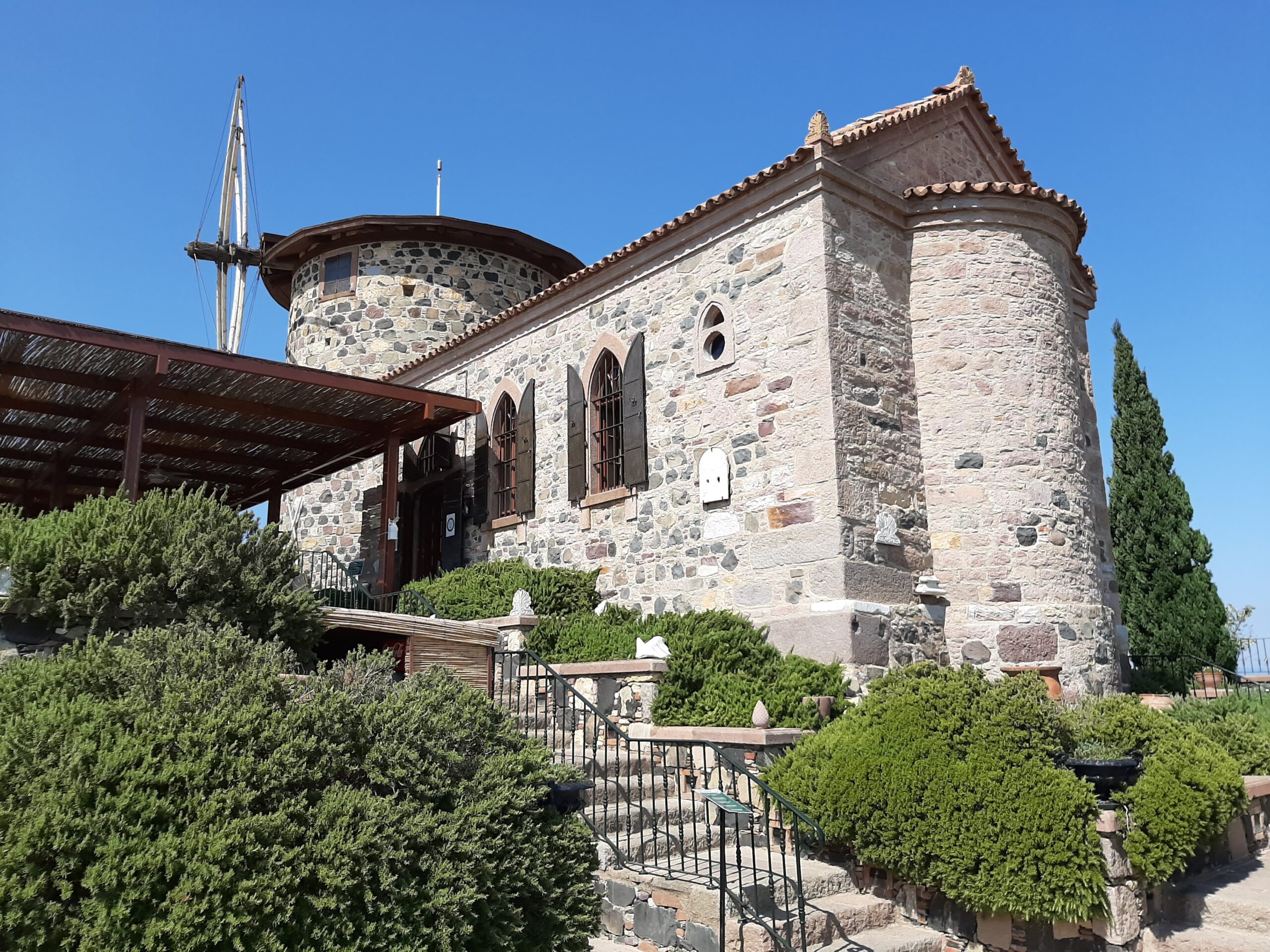
The Koç family are also the people behind the Sevim Necdet Kent Kütüphanesi. This library is dedicated to Necdet Kent, a Turkish diplomat posted to Marseilles during World War II. Over several years he gave Turkish identity papers to hundreds of Turkish Jews, many without valid passports, allowing them to escape slaughter in one of Hitler’s concentration camps.
The library is housed in the restored Agios Yannis Church, which was connected to the Fener Rum Patriarchy in Istanbul during the time of Patriarch Theodosios. The chapel attached to the library is lovely but the café can get very crowded in high season so don’t expect to get a table without having to wait. The windmills add to the general scenery but unlike in the past when residents would have carried their wheat up here to have it milled into flour, now they’re purely aesthetic.
On the way up to the library you’ll pass the Panaya church dating to the late 18th century. Sadly only the shell was left when I saw it, victim to scavengers looking for building materials and rumours of hidden treasure.
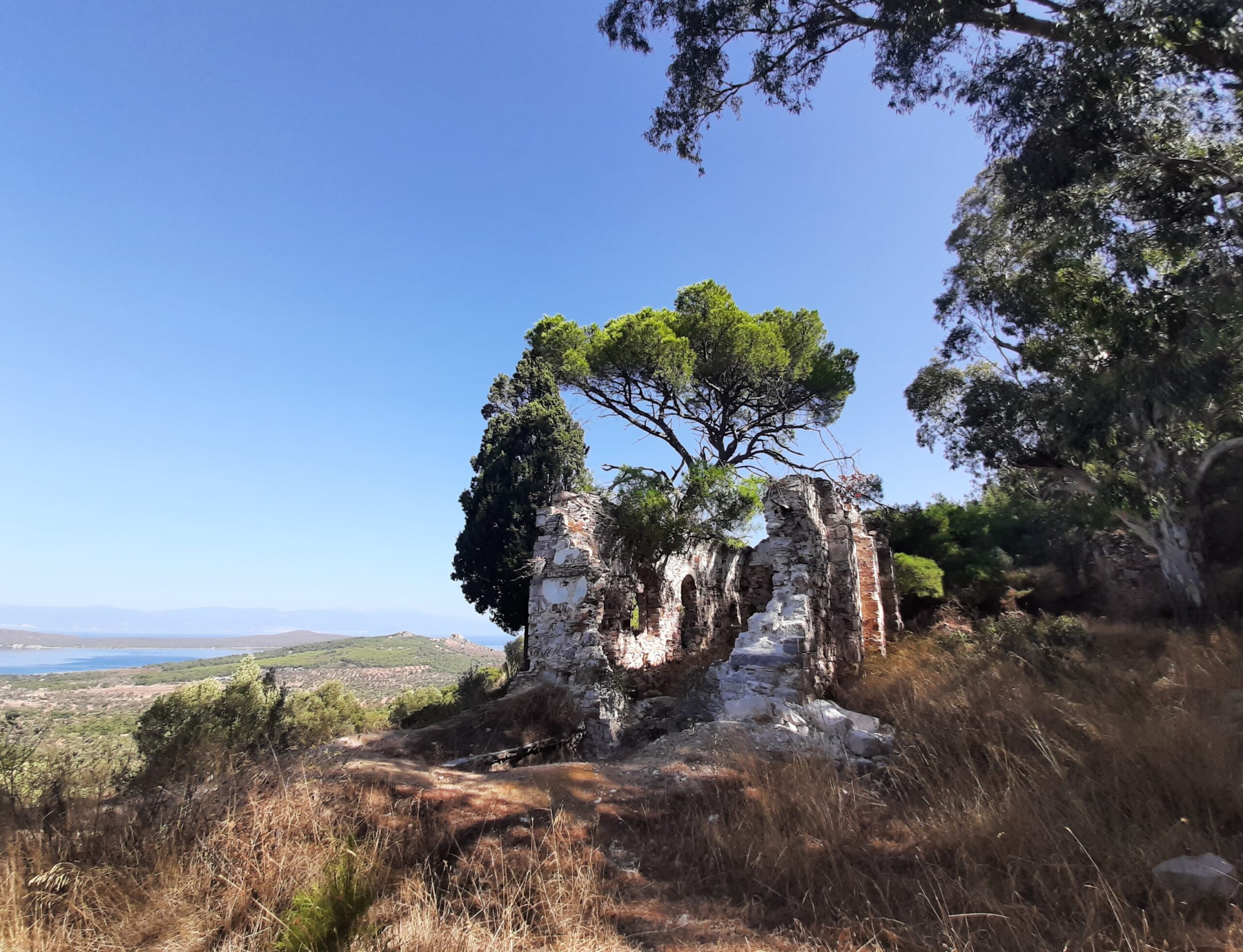
Hikers and even casual walkers should head for the green hills north west of the harbour on Cunda Island. The initial steep walk to the entry of the Ayvalik Adalari Tabiat Parki gives way to fairly flat and easy routes through the Ayvalik Islands Nature Park as it’s called in English. Pack a sandwich and a thermos so you can have lunch amongst the atmospheric remains to Çamli Monastery, where pine trees give way to views of sloping hills full of olive trees reaching out to the bay beyond.
Getting to Cunda Island
Although a causeway connects Cunda Island to the mainland, romantics much prefer to approach it by sea. Small boats regularly cross the water to dock at the harbour lined with old Greek buildings, next to the small square where minibuses from Ayvalik drop off and pick up passengers. Fares the minibus trip was 19tl as of October 2024 and when the boats start again in 2025 I’ll add the new price.
*in all three of our stays in Ayvalik we never ate at any of the fish restaurants on Cunda Island. Even our Turkish friends say the prices there are too high and the bills often come with an unpleasant surprise.
KÜÇÜKKÖY
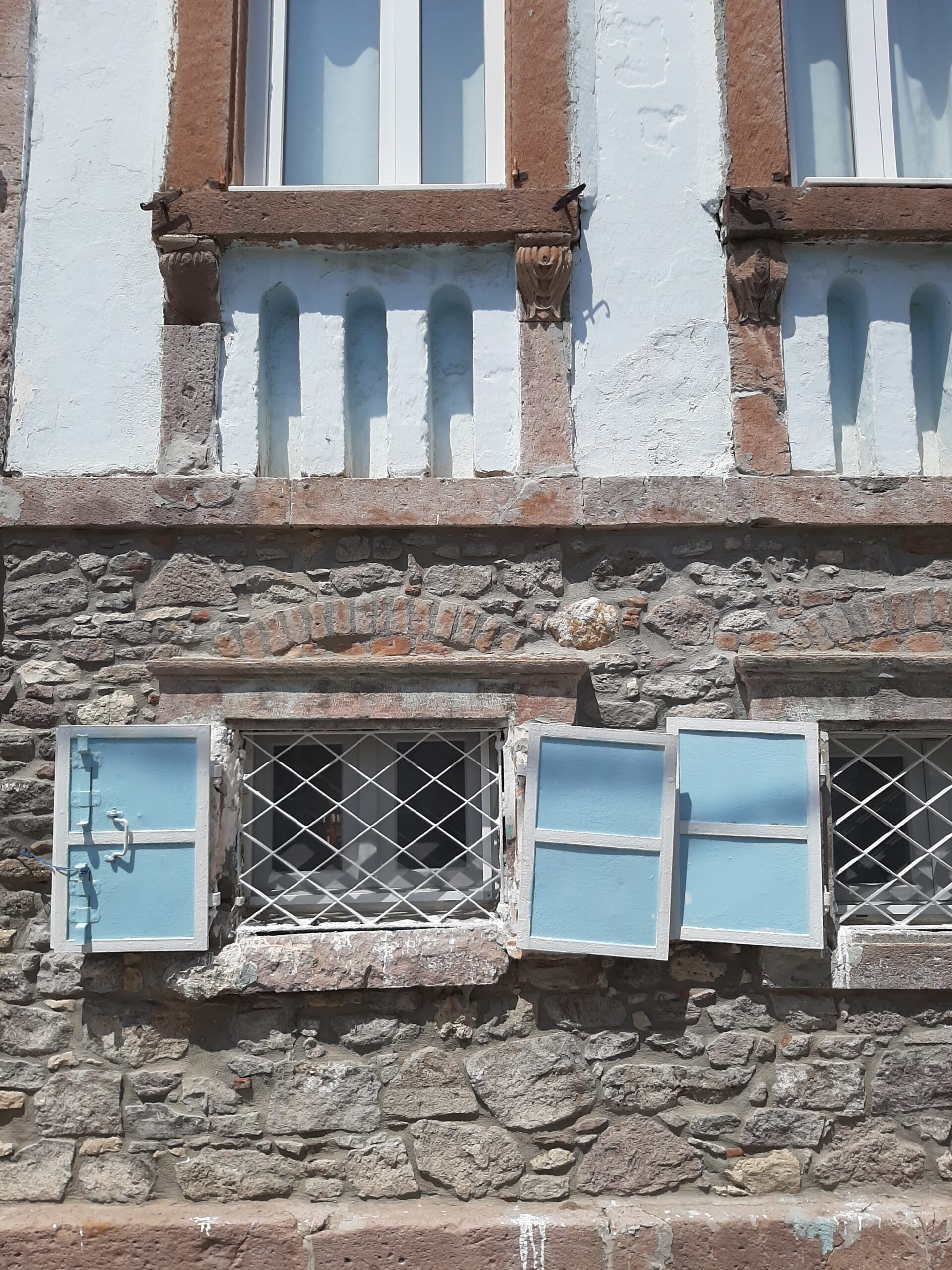
If you’ve already read Ayvalik – What to see and do you’ll know there are still locals of Balkan descent in the town. Most of them lived in what is now modern day Küçükköy, founded in 1462 by Fatih Sultan Mehmet when he was organising an expedition to Lesbos and needed a Janissary Obasi, a camping site for his troops. The initial makeshift set up became a village, and after Greeks moved there too it became known as the Greek Village in the 1800s.
Then, when the population exchange took places in the 1920s, Macedonian Bosnian Muslims were moved here in place of the existing Greek Orthodox villagers. However when the economy faltered in the 1980s the Bosnians moved to Sarmisaklı. See Ayvalik – What to see and do for more on that area. Nonetheless a Geleneksel Boşnak Teferiç Şenlikleri, a Traditional Bosnian Hidrellez is held in Küçükköy on May 4 each year.
Until recently Küçükköy was home to Turkish families mainly involved in agriculture. Now, private homes sit check and jowl with colourful ceramic workshops, art galleries and cafes set up by city folk looking for a different pace of life. They supplement the existing businesses well so the village is a nice place to come and wander around, soak in atmosphere and check out the back streets. Most of them lead to a main square of sorts where you’ll find the Ayiu Athanasiu Church, now a mosque and medrese, just in front of the Kent Müzesi ve Sanat Galerisi.
This City Museum and Art Gallery displays village history, including the story of the Balkans inhabitants, items they brought with them when they were relocated to Turkey and what happened during the migration. It’s housed in a handsome former school building initially restored for house the museum in 2013 then done up again in 2023. There are toilets underneath this building.
There are a total of three churches and three monasteries in the Küçükköy area, but aside from the once converted into a mosque in the village centre, the other scattered at some distance.
What to eat and buy
Zet Café, in a traditional stone building, was the firstcafé to be opened in Küçükköy. The name means groom in Bosnian and they prepare Bosnian specialties such as a Bosnian pastry called pita, as well as ribitsa, which is really small börek, that’s tightly rolled savoury pasty, served with yoghurt and garlic.
During the summer months, the small road bounding the mosque transforms into Kadınlar Sokağı. It’s given over to stands where local women sell homemade salça (tomato paste) and foods using tarhana, sundried curd mixed with tomatoes and flour. Look out for soka, a type of Bosnian pickle made with milk and cream.
Getting to Küçükköy
You can catch the number 48 minibus () from the Eski Garaj in Ayvalik at 9.30 or 11.00. Buses return at 12.00, 14.00 and 16.00. The village is VERY small so you’ll only need a couple of hours to look around. If you want to leave before 14.00, there’s a bus leaving at 13.00 from the same bus stop where you are dropped off when you arrive at Küçükköy. If you ask nicely the driver will probably drop you off on the main road where you can pick up a minibus back to town. It’s also possible to walk down to the main road too, provided the temperature isn’t set to scorching.
ŞEYTAN SOFRASI
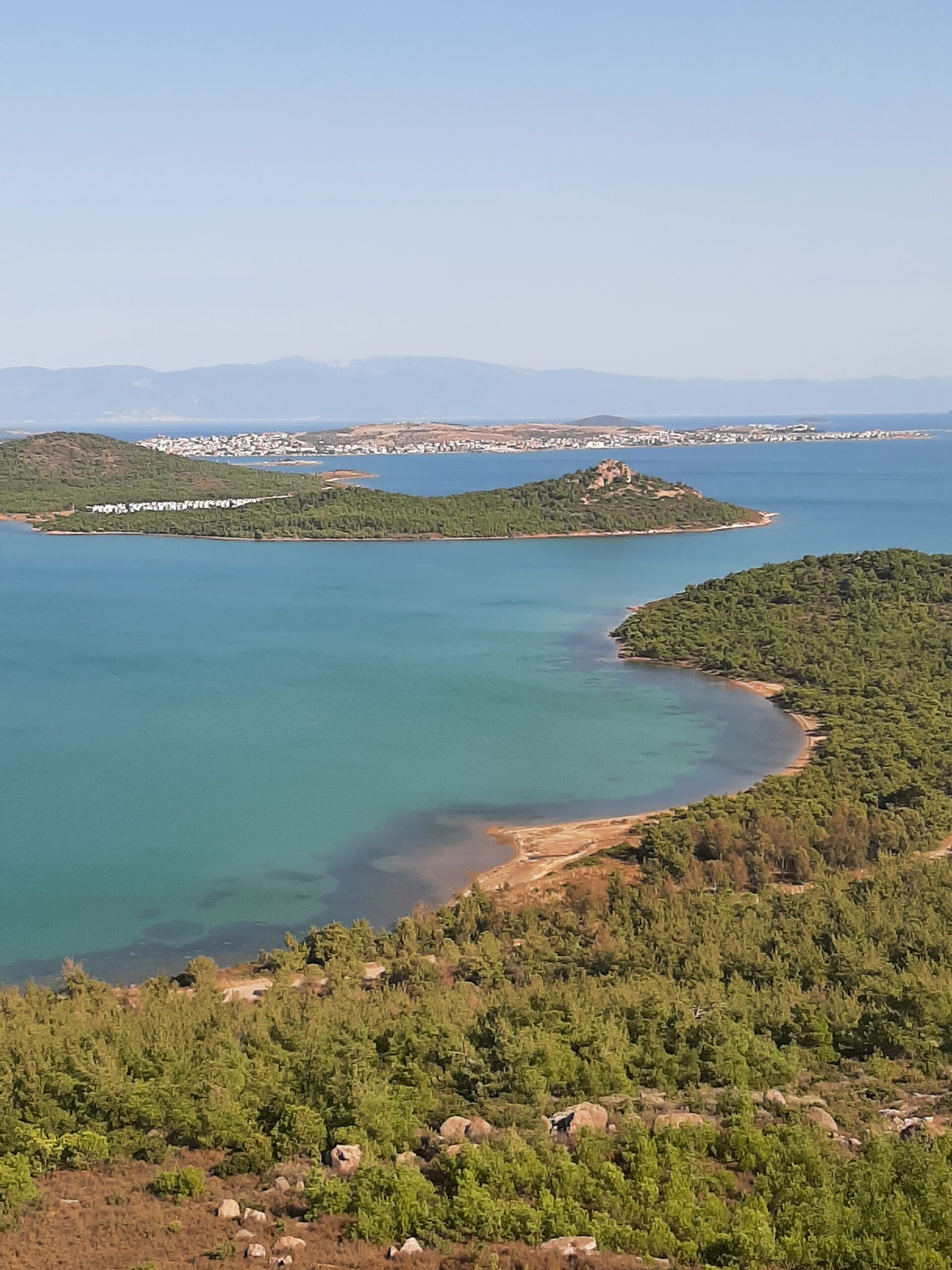
The Devil’s Table, as Şeytan Sofrası translates, is set on the edge of an ancient lava cone on a flat hilltop people say resembles the traditional round low tables people place in the middle of their living rooms, laden with dishes for everyone to eat from, seated on the floor.
Locals and visitors come to take tea and admire the view, while the superstitious come to see a depression in the rock had Lucifer, the devil, from heaven the horned devil planted one foot in Midilli (Lesbos) and the other one here. Whatever the truth, Satan’s mark is protected by a metal cage usually covered in locks and pieces of knotted thread, left by people hoping to alter their fate.
According to a tale dating to the time of the Ottoman Empire, a hermit known as Panolepe lived here undisturbed for years. When a famine set in the clergy and local authorities blamed Panolepe and the townsfolk decided to take matters into their own hands. Learning of their plot to kill him, Panolepe set about preparing an elaborate feast and when the would be murderers arrived they were beguiled by the food, and Panolepe escaped unhurt, never to be seen again.
A more secular version has it that the son of a wealthy man used to come up to this lofty spot to hang out with his friends, drink raki and play cards. Concerned his son would fail his studies, the father convinced him if he dined with the devil, so to speak, his fate was sealed. It’s not clear whether it worked or not but it makes for a good story.
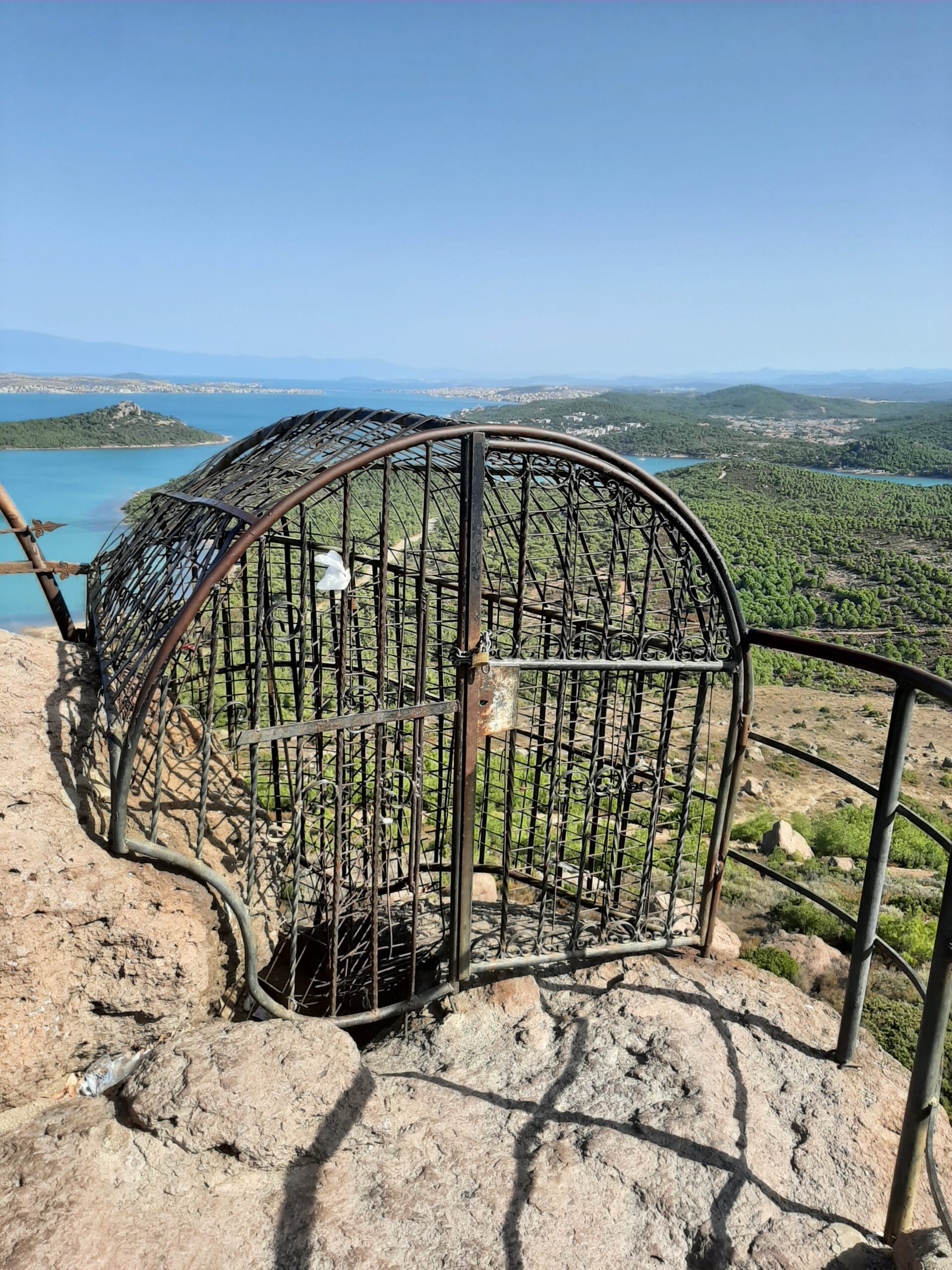
Şeytan Sofrası is on Sarımsaklı Yarımadası, a nature reserve near the stretch of beaches of the same name. We were lucky to be driven to the top by a friend, otherwise you can catch a Sarımsaklı minibus from Ayavlik and ask to be dropped off at the turn off to the Murat Reis Çamlik wesbite if you’re prepared to hike 3.5 km to the top, otherwise negotiate with a taxi driver.
ONE LAST THING …
If you want to explore a part of the Aegean that packs a lot in a small area, Ayvalik should be on your list of destinations to visit in Turkey. Read about all the other things you can see and here in Ayvalik – What to see and do post. Long term Istanbul residents looking for a city break will like it too.
We went to Ayvalik more than once because much as I love Istanbul, the city has changed a lot in the last decade or so. I’m still excited and fascinated by the challenge of so much to see and do, but living here can be very tiring due to the sheer number of people who live here. Just lately I’ve been craving my own city escape, somewhere a bit smaller, greener and quieter, but unfortunately, Ayvalik isn’t it.
Pretty as the town looks, the narrow streets constantly rattle with the noise of petrol motorbikes zipping in and out of pedestrian zones. The riders, usually men, continue to rev their motors while they sit astride their bikes having conversations with friends they’ve come across on the street. Eating outside means breathing in fumes, unless you’re sitting right by the water which usually means paying a premium for the privilege.
The main street, with one lane either way, is cacophonous with traffic from morning til night, amplified to the nth degree in summer. While I won’t be calling Ayvalik my part-time home any time soon, the slower pace, friendly residents and seaside town atmosphere make for a refreshing change to Istanbul. If you haven’t been yet, do visit at least once to see it for yourself.
*********************************
Planning to come to Istanbul or Turkey? Here are my helpful tips for planning your trip.
For FLIGHTS I like to use Kiwi.com.
Don’t pay extra for an E-VISA. Here’s my post on everything to know before you take off.
However E-SIM are the way to go to stay connected with a local phone number and mobile data on the go. Airalo is easy to use and affordable.
Even if I never claim on it, I always take out TRAVEL INSURANCE. I recommend Visitors Coverage.
If you’re travelling alone, check out this post on useful solo travel tips Turkey for women (and men).
I’m a big advocate of public transport, but know it’s not suitable for everyone all the time. When I need to be picked up from or get to Istanbul Airport or Sabiha Gokcen Airport, I use one of these GetYourGuide website AIRPORT TRANSFERS.
ACCOMMODATION: When I want to find a place to stay I use Booking.com.
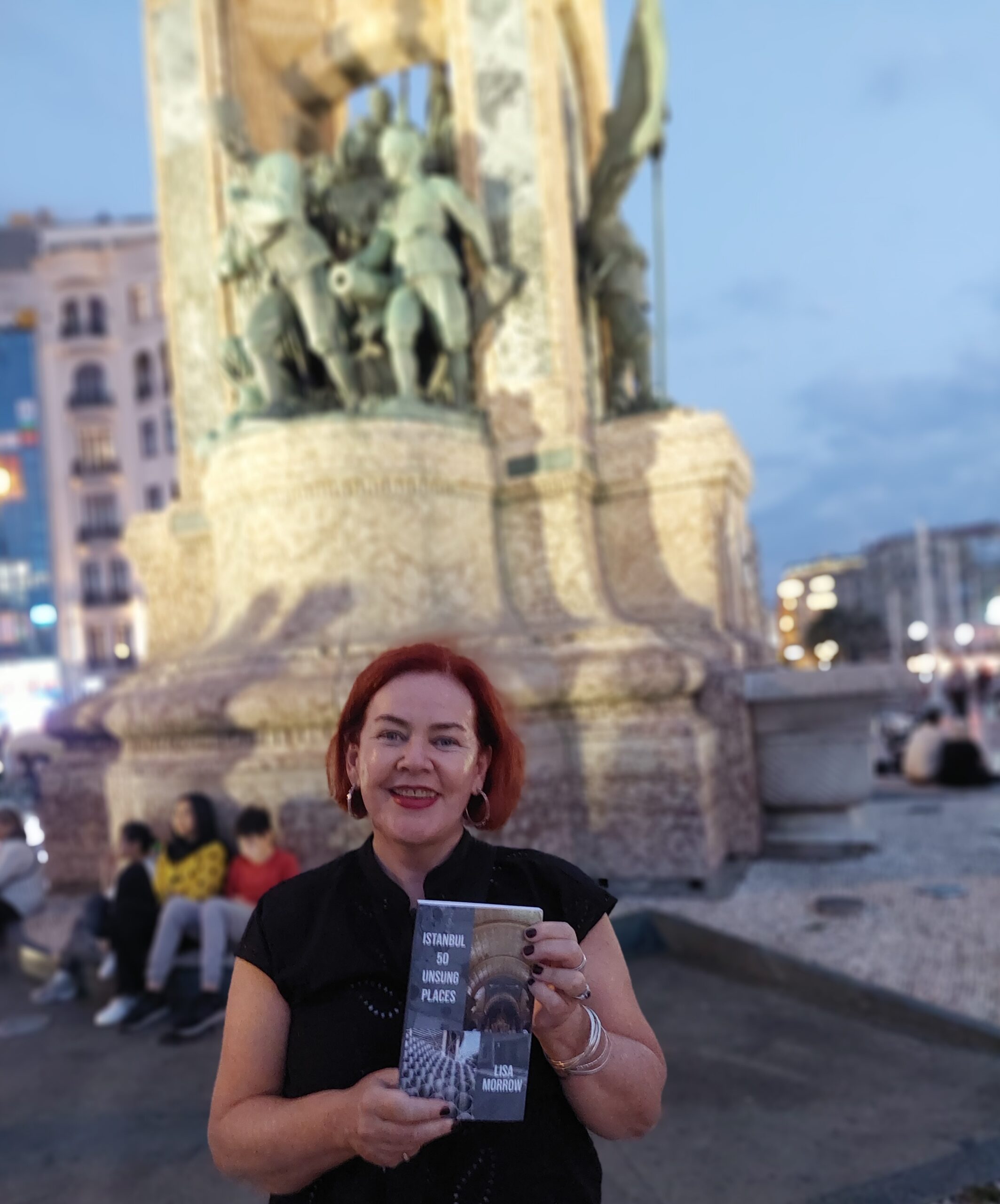
CITY TOURS & DAY TRIPS: Let me guide you around Kadikoy with my audio walking tour Stepping back through Chalcedon or venture further afield with my bespoke guidebook Istanbul 50 Unsung Places. I know you’ll love visiting the lesser-known sites I’ve included. It’s based on using public transport as much as possible so you won’t be adding too much to your carbon footprint. Then read about what you’ve seen and experienced in my three essay collections and memoir about moving to Istanbul permanently.
Browse the GetYourGuide website or Viator to find even more ways to experience Istanbul and Turkey with food tours, visits to the old city, evening Bosphorus cruises and more!
However you travel, stay safe and have fun! Iyi yolculuklar.
